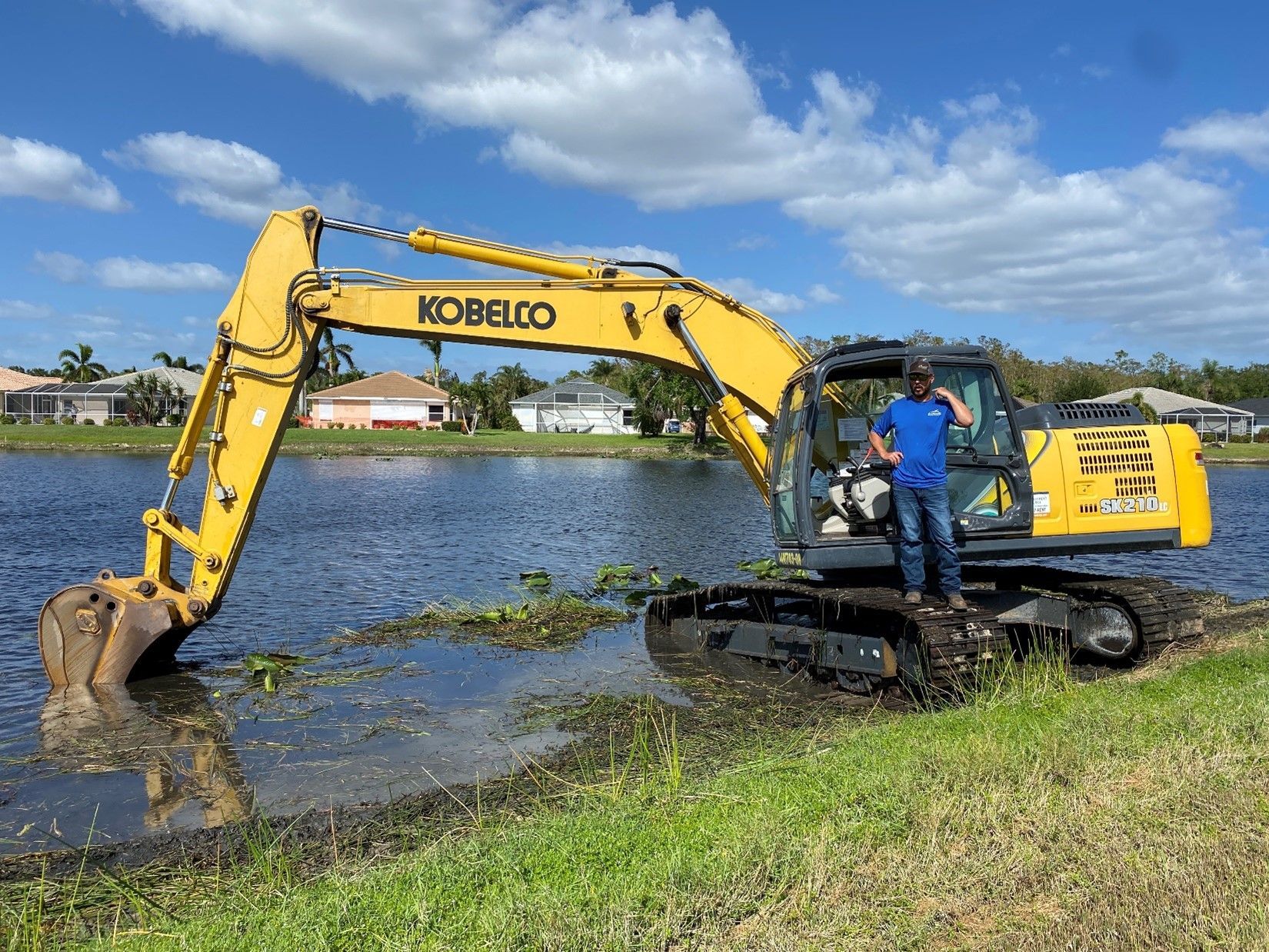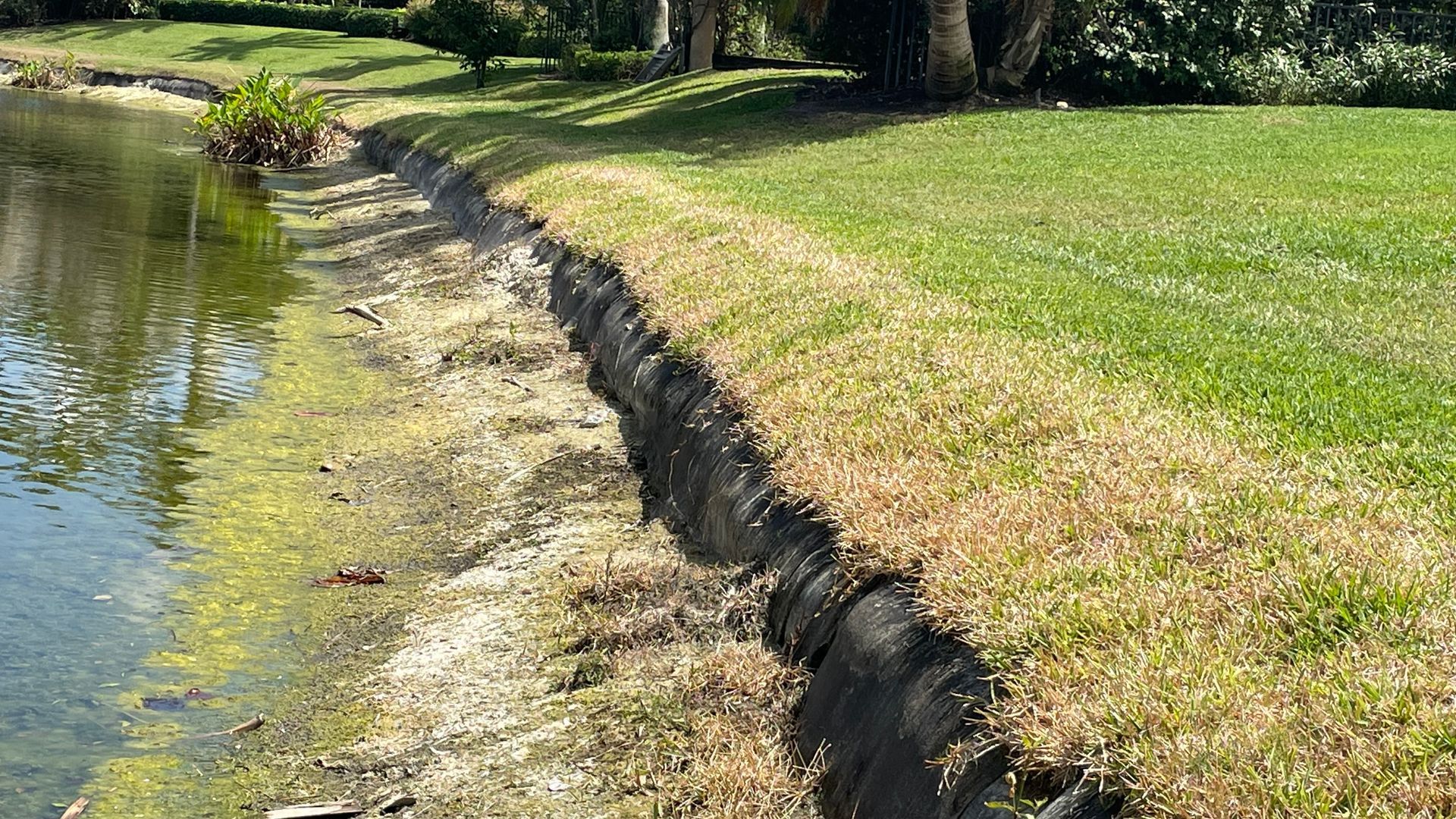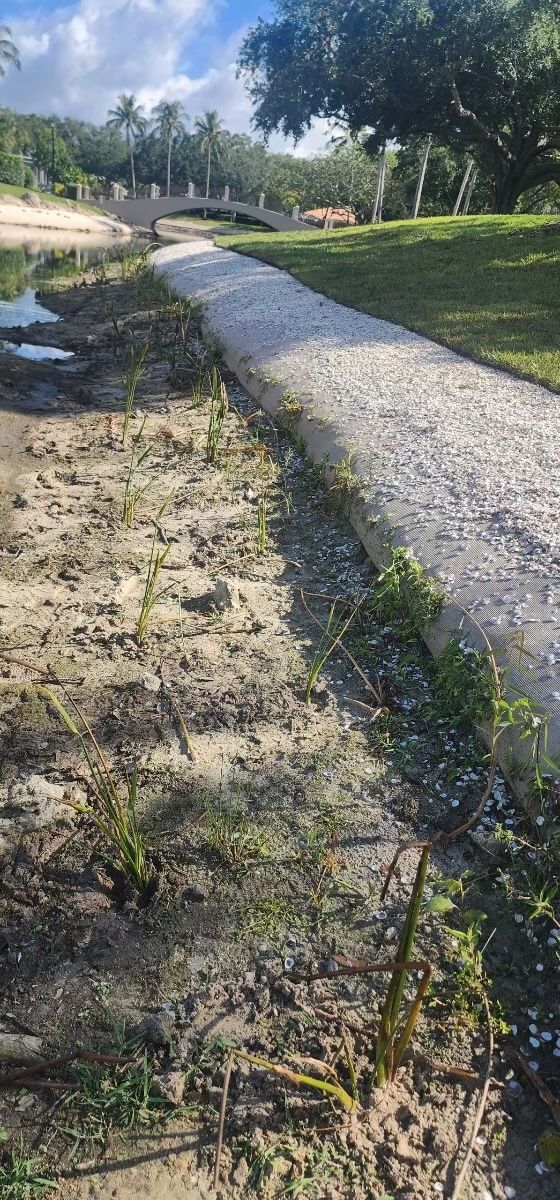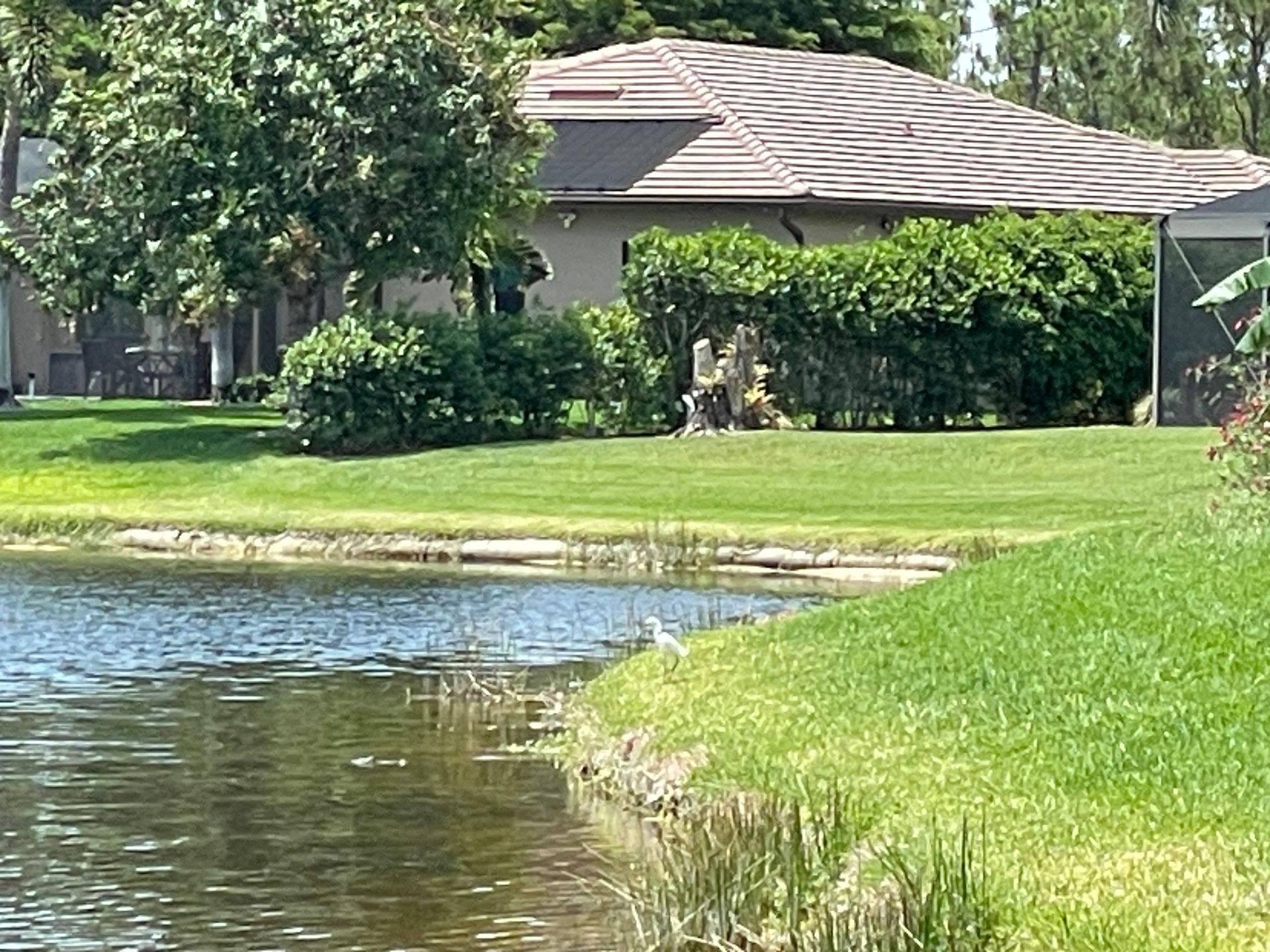Erosion Control - An Overview
All planned communities in Florida are required to have a stormwater management plan which usually involves lakes which are used as retention areas for water. These bodies of water succumb to erosion and fall into disrepair. At Seabreeze Erosion Solutions, we have recognized this underserved environmental need and are addressing it head-on!

From patented erosion systems developed alongside engineers… to native plant horticulture… to cutting-edge construction equipment, we are leading the way in erosion control and lake management in South Florida. Our mission is to improve the health, safety, and appearance of every single lake, pond, river, and canal in the state of Florida. Our Learning Center provides a treasure trove of information and research on everything erosion. Please reach out to us if we can be of help with your community!
Erosion Control is important because the State of Florida, as well as local municipalities require bodies of water to be in good repair. It is also crucial to keeping residents and pets that live on lakes safe. Lastly, it can drastically alter the health and sustainability of a lake, pond, river, or canal if left unchecked. Don’t get caught by the South Florida Water Management District or the County! Erosion is pernicious and sneaks up on most people!
Systems and solutions used to help restore and prevent erosion include rock, shell, treated lumber, concrete, polypropylene, and steel structures to stabilize the diagonal shoreline and keep the size and shape of the body of water uncompromised. There are some good systems and also some bad systems. Learn the difference and make sure you do your research! Our Learning Center is a good place to begin!
Methods of installation and maintenance vary from work done from a huge ship all the way to installation from land using light equipment. The methods should be catered to the size of the water body, the current, and access. Lake maintenance is the practice of mitigating the growth of exotic weeds and plants, maintaining healthy water by monitoring algae blooms, and stocking the lake with beneficial flora and fauna.
Budgeting for shoreline repairs and obtaining permits involves creativity and the right resources in order to ensure success. Communities with lakes, ponds, rivers, or canals should set aside some money for lake maintenance which can be used at a later date to stabilize their shorelines from erosion. Often, special assessments and commercial loans must be considered, especially when the state of Florida or the county the property is in issues a letter, fine, or citation. Our services include erosion control, shoreline stabilization, littoral planting, drainage systems, diving services, pipe inspections/cleanouts, lake maintenance, wetland buffers, exotics removal, fountain service, and more! If you need help with budgeting for any of these services, please give us a call.
Florida is a beautiful place to live, work, and retire. We have some of the best weather, beaches, and food in the entire country. Let’s work together to keep it beautiful for generations to come!
Recent Posts






